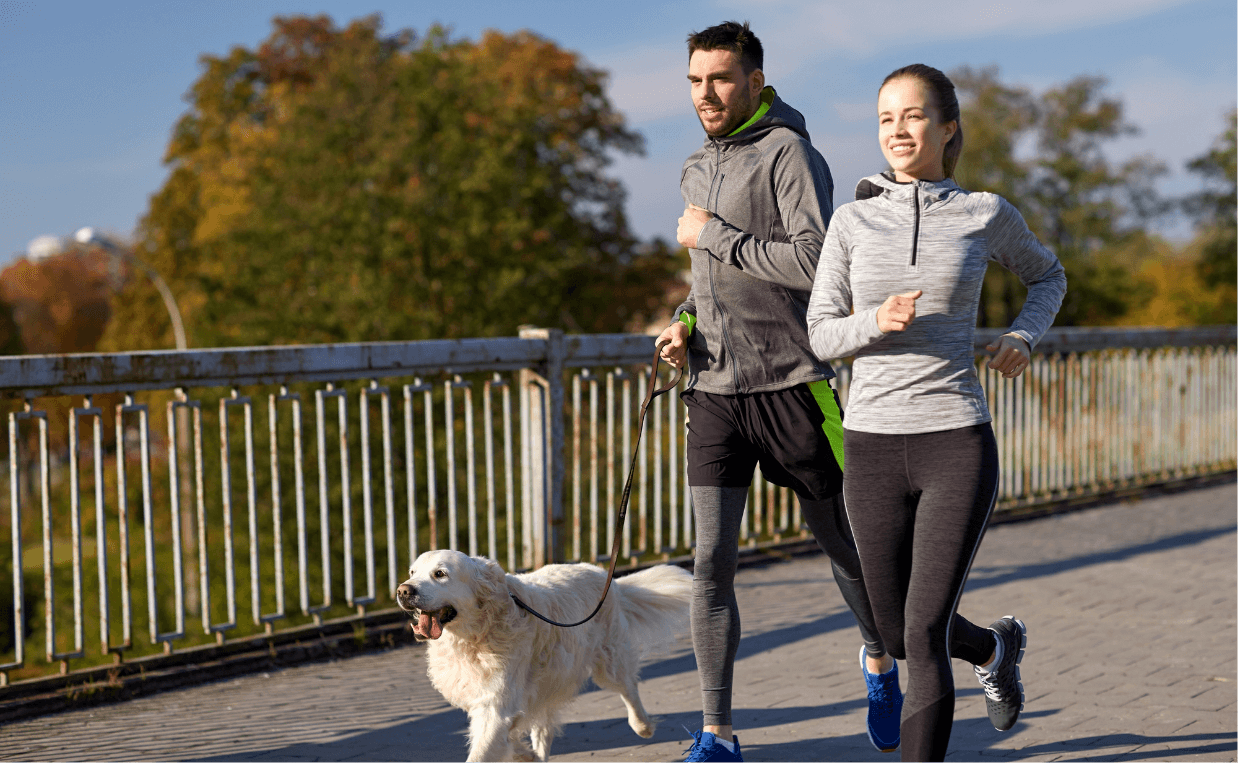
Running with your dog is a fun way to spend time together. It helps you both get needed exercise and can be a great way to stay motivated. Running can also be a wonderful way for the two of you to bond.
Dogs can be the best running partners ever. They will run the distance with you, they will run anywhere at any time and are always happy about running. They never complain about the weather, don’t argue about the route, allow you to set the pace and distance, and are motivating influence on those days your really don’t feel like running but know you need the exercise and will enjoy it once you get out there.
Dogs love to run. They were born to run. Running will help maintain your dog’s weight, improve muscle tone, maintain a strong cardiovascular system and build endurance.
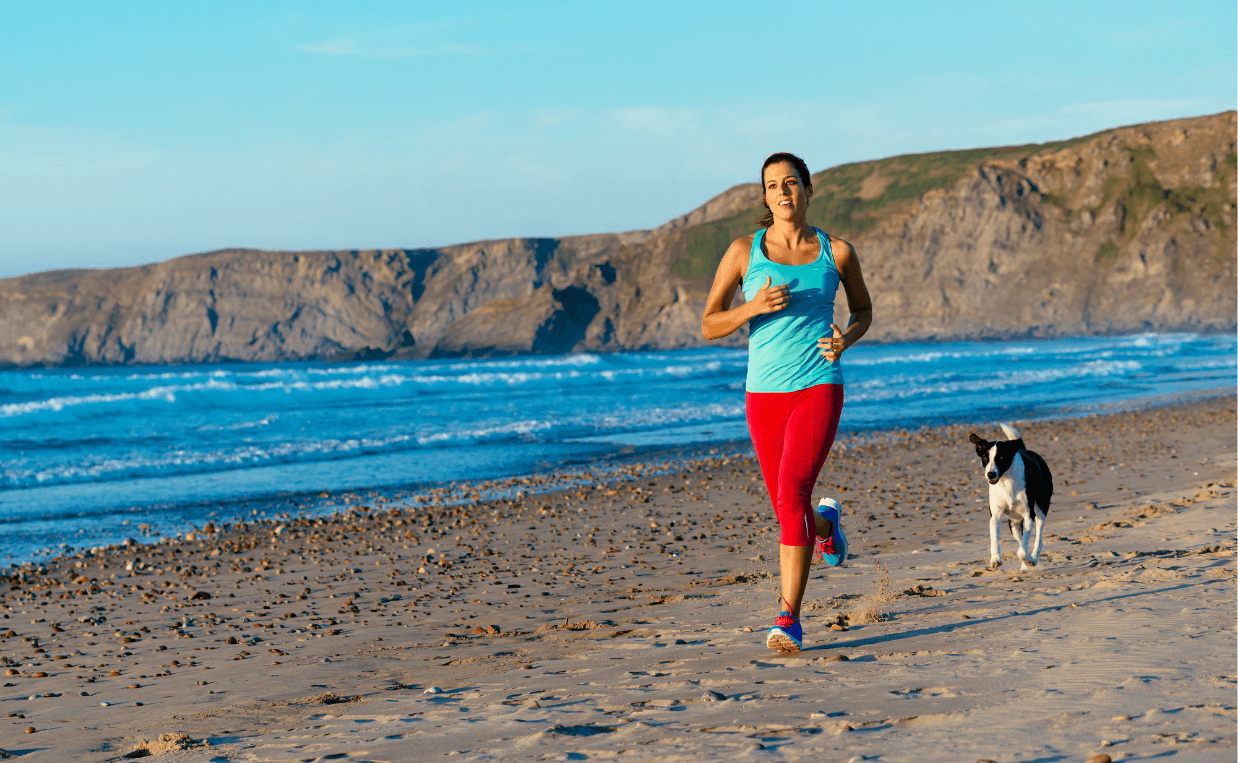
Running is also beneficial for your dog’s mental health. Running makes dogs happy. It allows them to explore the world through sights, sounds and smells. They get to spend time with you doing something they enjoy. It allows them to release energy, reducing the chances they will engage in destructive behaviors.
Check out the following tips to prepare your dog to go running with you.
Consider Your Dog’s Age
Age needs be a serious consideration when you think about taking your dog running with you. Don’t take your dog if he or she is too young or too old. The general rule of thumb is to hold off on taking your dog on long, directed runs until he or she is at least 18 months of age, and for some large and giant breed dogs, wait even longer.
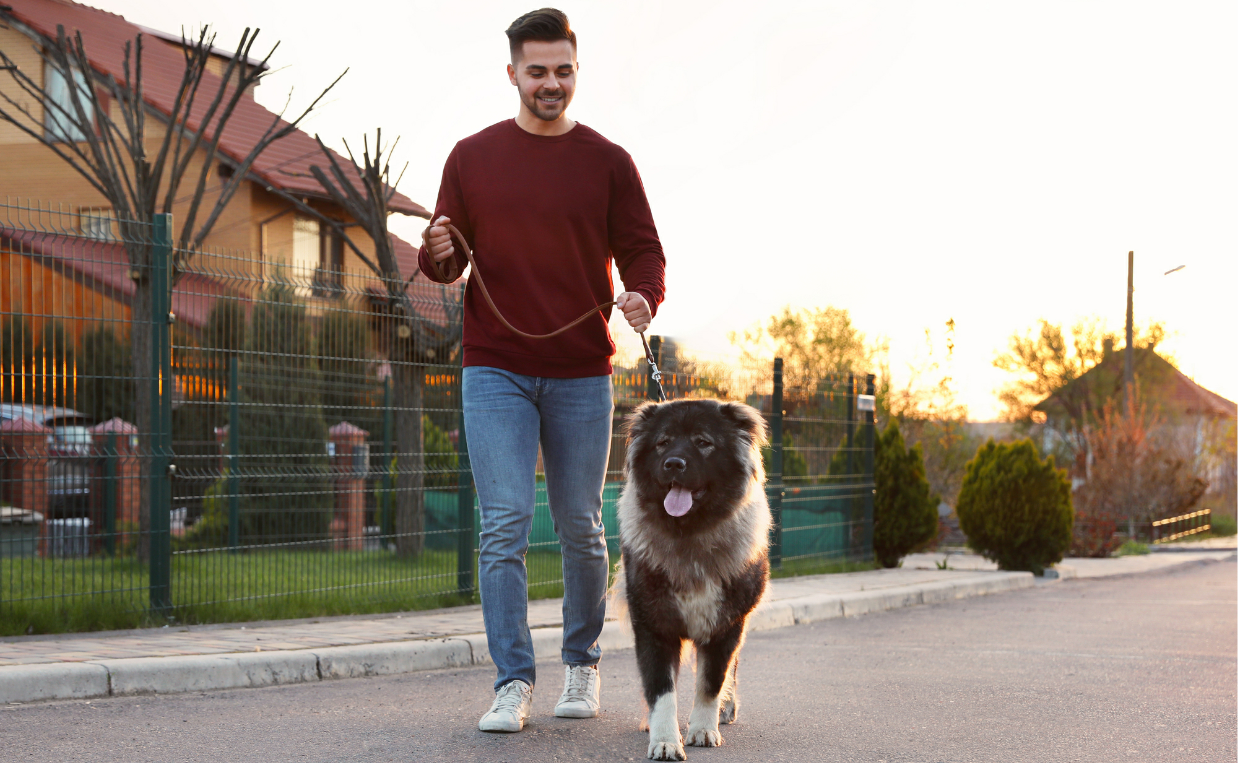
Taking a dog on extended runs prior to the eighteen-month mark can cause long-term, irreparable damage that may affect your dog for the rest of his or her life. Young dogs are also prone to spiral fractures and they don’t have the cardiovascular system for endurance.
Conversely, senior dogs may not be up to the task. Consider your dog’s overall condition before taking your older dog running with you.
Schedule a Visit to Your Veterinarian
Before your bring your dog on a run, consult with your veterinarian to make sure your pooch is up to the task.
In addition to age, there are other physical considerations, such as breed and physical health.
While all dogs need physical and mental stimulation, running long distances isn’t right for every dog.
Some dog breeds are not equipped for such a physically taxing activity.

For instance, very small dogs with short legs (such as a Chihuahua or Dachshund) may not be suitable for running. Brachycephalic dogs – dogs with shorter heads and flat noses, such as Pugs, French Bulldogs, etc. are not suitable as running companions due to the structure of their faces and breathing anatomy.
If you really have your heart set on taking your canine buddy along when you go running, but he or she is physically not able for any reason, consider taking a pet stroller for him or her to ride in.
Conditioning is Important
Once you have the all-clear from your vet, take the time to condition your dog gradually. Start with walks and gradually integrate increasingly longer jogging sessions into your walks until your dog’s stamina as built up. Watch closely for panting or lagging; these both indicate your dog has had enough and needs a break.
Begin all workouts with a warm-up period of brisk walking or easy jogging before running as well as a similar cool-down after your workout.
Rest and recovery are essential. When starting out, run with your dog every other day, allowing time for muscle recovery and to avoid injury.
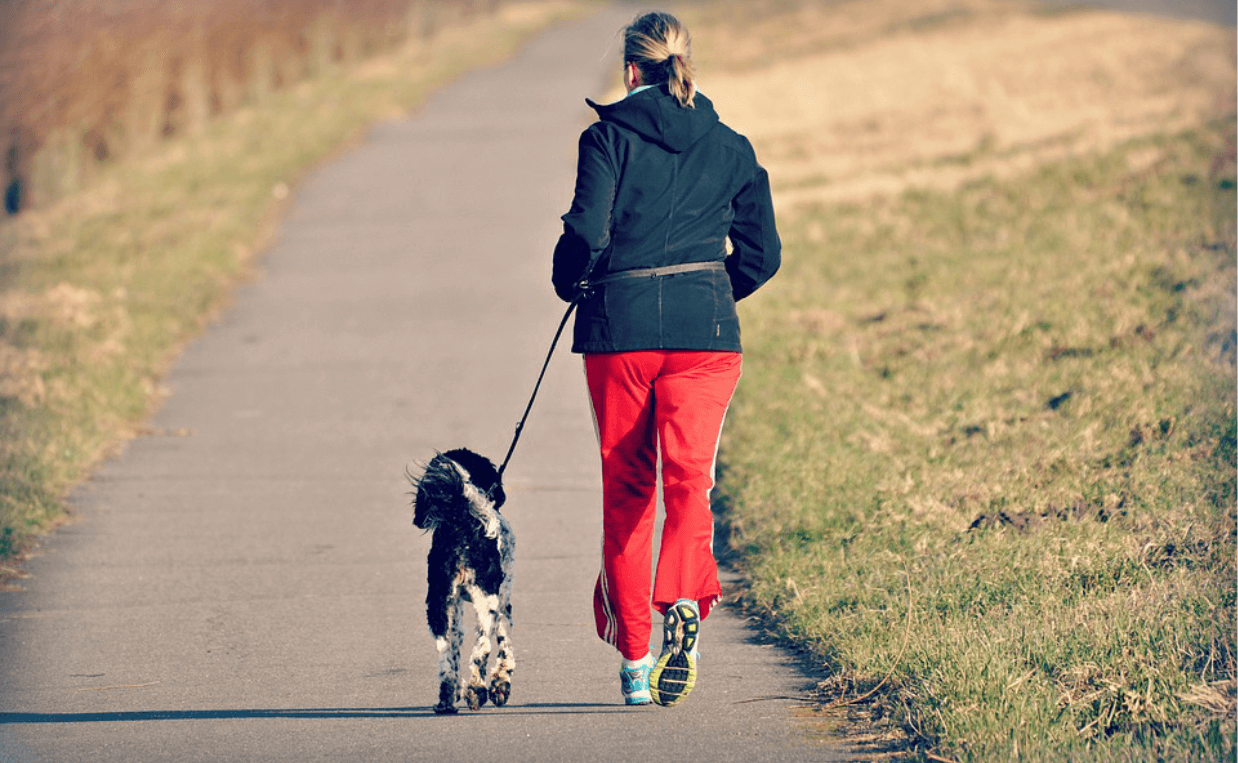
After four to six weeks of training three times a week for 20 minutes, both you and your dog will have built up enough strength and endurance to begin to increase your distance. The generally-accepted guideline is to not exceed a 10 percent increase (in either time or distance) a week. As you increase your mileage, your dog’s paw pads will gradually toughen to handle the longer distances.
Train your dog to run at your left heel, close to your leg. Your dog needs to learn how to stay with you so the leash is loose, without pulling you. These simple measures will help your dog avoid tangles and tripping when you are running together.
Is your dog having trouble learning to walk and run on a leash? Consider training classes! Our expert trainer, Patti, will help you and your dog learn how to enjoy outings together using a leash.
Run With the Right Supplies
Before you get started, you’ll want to make sure you have the appropriate supplies.
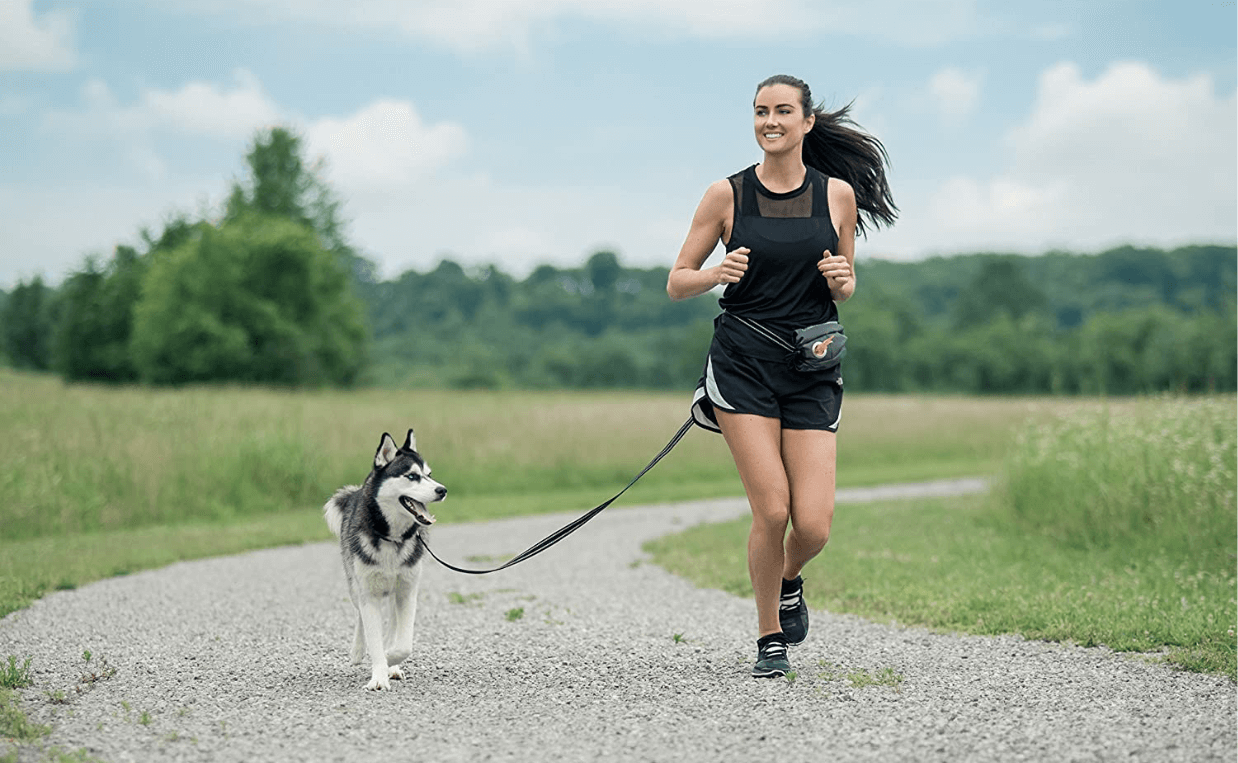
Hands-Free Leash
A hands-free leash can be a valuable tool for running with your dog. These leashes use a bungee design, which allows you and your dog to run together without feeling like you’re tugging on one another.
The hands-free waist leash helps teach your dog how to run in sync with you instead of ahead or behind you. Hands-free leashes free up your hands so you can run naturally. Be sure to add a carabiner-locking clasp to ensure it doesn’t come off while you’re running.
Typically a six-foot leash works well, but dog leash lengths can vary, so experiment with what is comfortable for both of you.
Reflective Gear
Whether you will be running in a rural or urban area, be sure to wear reflective vests or apparel. Roadways do not always have designated sidewalks or streetlights, so it’s crucial to wear clothing that alerts drivers.
Running on the opposite side of the road against traffic is the safest way to make sure you see oncoming vehicles and is the law in many states. Unfortunately, distracted driving is common, so vigilance on your part is essential when running with your dog. Stay alert and aware.
Water for Both of You
Be sure to always bring a water bottle or water source for your dog while on runs. Slowly providing water throughout a long-distance run (not simply throwing down a bowlful of water at the end) helps prevent your dog from taking in water too quickly. Dogs benefit from drinking water throughout physical endurance activities in small doses. Bring a portable water bowl along to keep your dog hydrated.
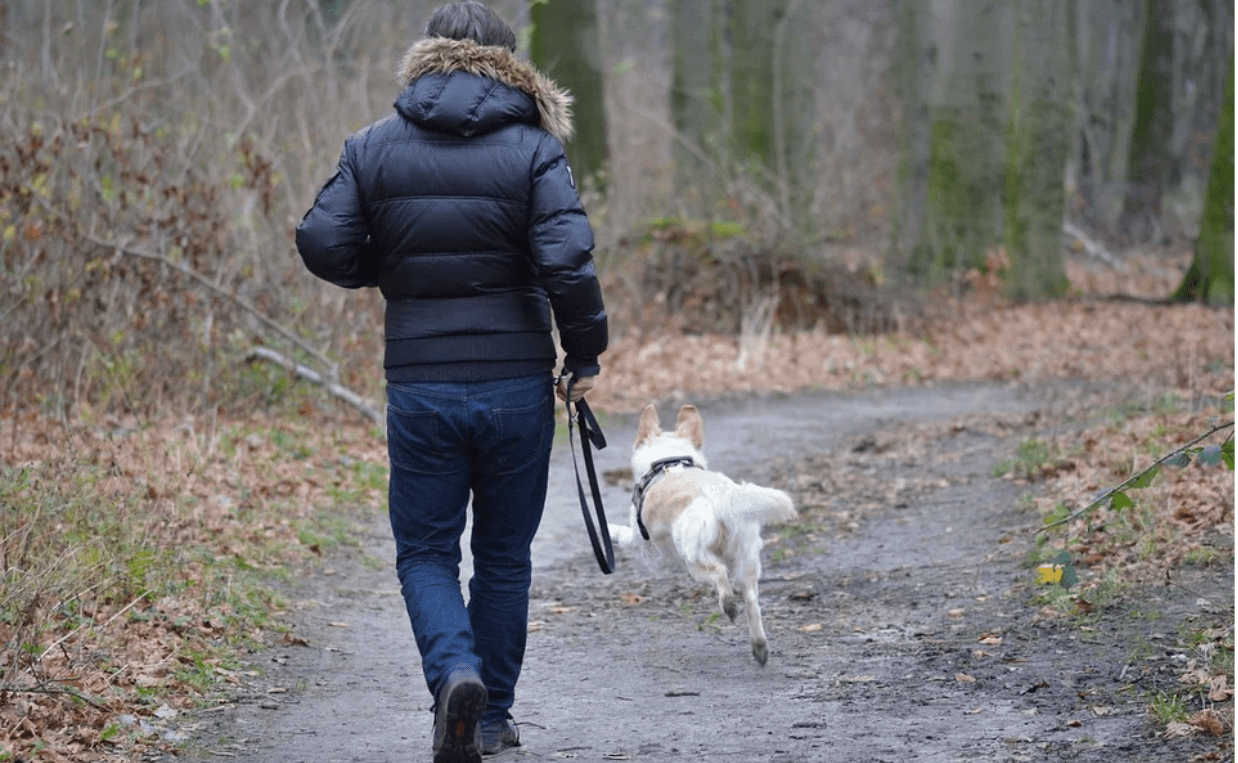
Consider the Weather and Outdoor Temperature
Here in Colorado we have to be mindful of cold and hot temperatures. During the summer, be careful about running when it’s too hot outside. During the cold winter months, make sure the roads are clear of slippery ice and paw-damaging salt. If in doubt, sit it out.
Read more: 6 Tips to Protect Your Dog from Summer Heat
Always consider the temperature, humidity and environment in which you will be running.
Be sure to protect your dog’s paws in hot and cold weather. Consider paw wax or all-weather pet booties as a defense against burning, freezing or cracking.
Read more: 16 Tips to Keep Your Dog Safe and Comfortable During Winter Weather
Special Considerations for Trail Running
Running in a natural environment is appealing to many, especially your dog. Different sights, smells and sounds found on a trail run can be energizing, exciting and enjoyable for both of you.
Read more: 35 Best Dog-Friendly Hiking Trails in Colorado Springs
Even if you are running in an area where having your dog off-leash is safe and legal, it’s a good idea to keep your dog on a leash when trail running. Wild creatures such as rabbits, squirrels, foxes and deer may prove to be a strong distraction or danger if your dog decides to chase after them. Additionally, poisonous plants and pathogens in water sources can be a hazard you don’t want your dog exposed to.
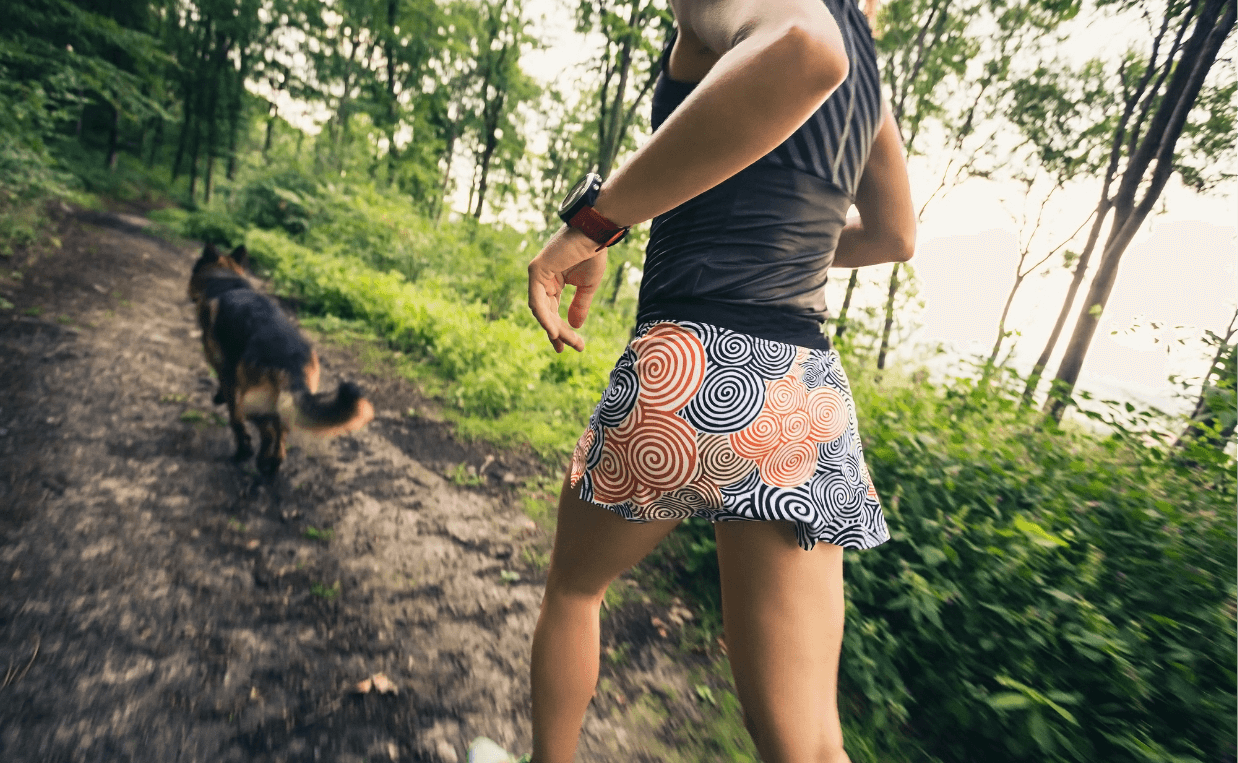
Read more: 10 Life-Threatening Hazards for Dogs Lurking in Your Own Backyard
Be sure to yield the right-of-way to other trail users and keep your dog close to your side as they pass.
Tick and heartworm protection are also a must if you are trail running with your dog. Talk to your vet about tick and heartworm prevention and treatment when you take your dog in for his or her pre-running check-up.
Trail running is generally easier on your canine buddy’s paws and joints than cement or asphalt, but it’s still a good idea to check your pooch over thoroughly after your run.
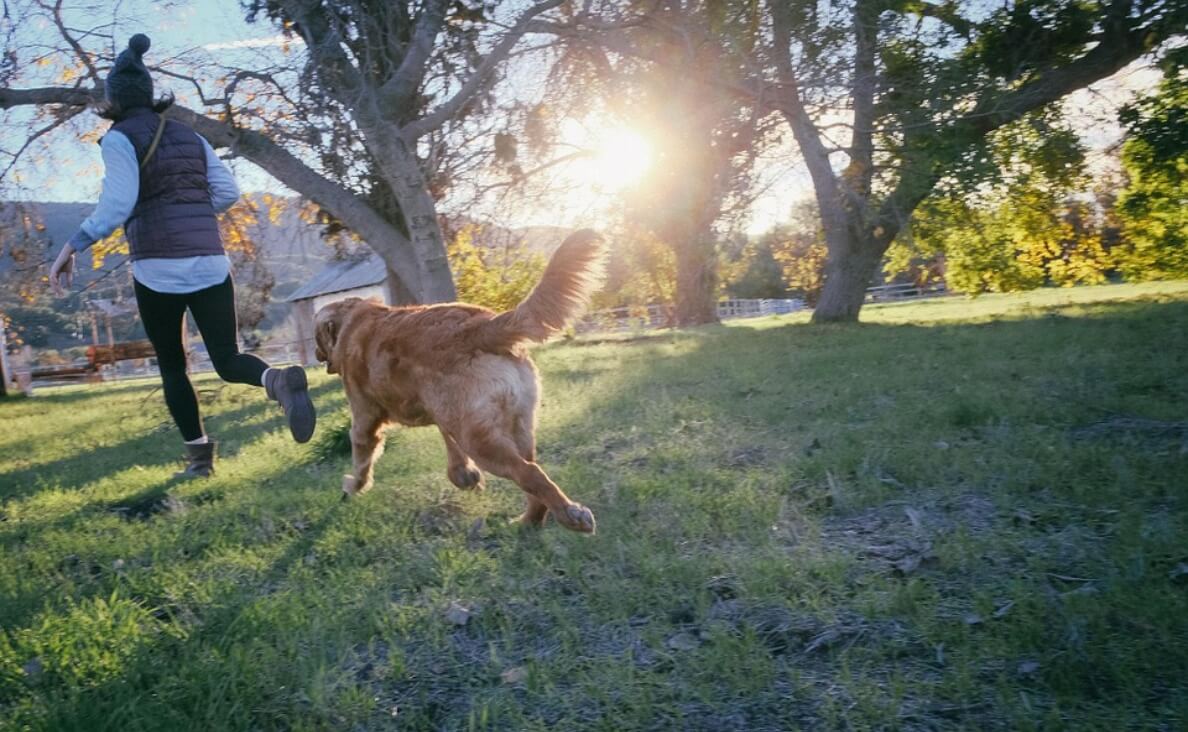
Running with your dog can be highly addictive! Most dogs love to run with their people and their joy of running is often infectious. With proper preparations, running with your dog can be an enriching experience for both of you! Happy trails!
Have you taken your dog running with you? What tips can you share with the rest of the Canine Campus community? Please comment below…

 110 Dog Friendly Places to Shop in Colorado Springs
110 Dog Friendly Places to Shop in Colorado Springs How to Prepare for a Professional Dog Photo Shoot
How to Prepare for a Professional Dog Photo Shoot 5 Tips for Choosing the Best Toys for Your Dog
5 Tips for Choosing the Best Toys for Your Dog Tips to Avoid Dog Boredom
Tips to Avoid Dog Boredom Teach Your Dog to Fetch: A Step-by-Step Guide for Fun and Exercise
Teach Your Dog to Fetch: A Step-by-Step Guide for Fun and Exercise






Wow…this was great. I had never heard of PAW WAX before reading this. Very informative. I will definitely have to get some of this. Thanks.
Hi Cory, We use that type of product on some dogs in the pack that have sensitive paws. It works great to protect them, especially if the dogs are mostly grass/carpet dogs and don’t get out on hard surfaces often. It’s VERY useful when hiking outdoors, especially in snow or rocky areas. Thanks for your comment! Joelle